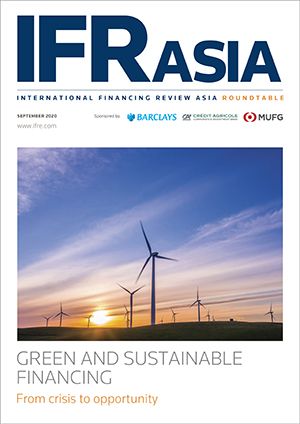IFR Asia’s 6th annual Green and Sustainable Financing Roundtable took place on August 20, 2020, amid a period of unprecedented change in the capital markets.
The Covid-19 crisis has forced a rethink of how business is done around the world. Travel restrictions and social distancing have shaken industries and transformed lifestyles, yet the capital markets have never been busier. In Asia, the financing markets have adapted quickly to new ways of working and welcomed new products and first-time issuers, and demand for social and sustainable instruments has boomed.
The renewed focus on public health and social benefits has pushed Covid relief bonds, green finance and sustainability-linked loans higher up the agenda for both issuers and investors.
Sponsored by Barclays, Credit Agricole and MUFG, this IFR webcast drew a live audience of almost 400, testament to surging interest in green and socially beneficial investments, as well as the willingness to embrace a change in format.
The dramatic increase in sustainable financings this year has posed a new set of questions for market participants. How can issuers be sure they choose the right option? How can investors track the impact of their allocations? And, above all, how can sustainable financing incentivise the transition to a cleaner, more sustainable future?
To see the digital version of this roundtable, please click here
To purchase printed copies or a PDF of this report, please email gloria.balbastro@refinitiv.com

